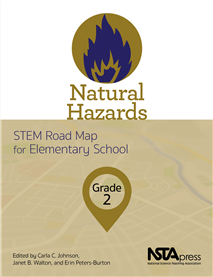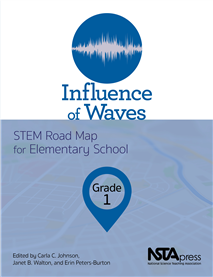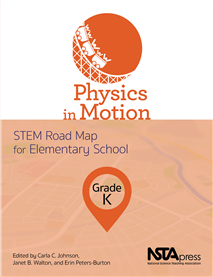New NSTA Press Books Help Young Students Apply Science to the Real World
By Carole Hayward
Posted on 2019-11-19
Would you like to help your students understand the connections between learning science in school and using it in their everyday lives? The STEM Road Map Curriculum Series from NSTA Press was developed to do just that. With the goal of infusing real-world learning contexts and authentic problem-solving pedagogy into the classroom, the series helps educators to create an integrated approach to teaching science, technology, engineering, and math. Students will learn new concepts and work collaboratively to apply them during creative, hands-on activities.
Developed by STEM educators Carla C. Johnson, Janet B. Walton, and Erin Peters-Burton, the series covers all the STEM concepts as students advance from kindergarten through grade 12. The modules are designed to be both in-depth and flexible, giving teachers room to customize them to meet their needs.
The STEM Road Map Curriculum provides the perfect set of tools for districts, schools, and teachers who are charting a course toward an integrated STEM approach. The series is anchored in the Next Generation Science Standards, the Common Core State Standards, and the Framework for 21st Century Learning, and the lessons are designed to be meaningful, motivational, and engaging.
Students will have ample opportunities to design technologies and learn from their failures and efforts along the way. They will practice asking critical questions, analyzing data, thinking strategically, and working collaboratively. They will be encouraged to imagine and create.
Three new elementary school-focused books from the series will be coming off press this fall. Natural Hazards, Grade 2: STEM Road Map for Elementary School presents students with the challenge of helping a community to prepare for natural hazards such as floods, wildfires, and earthquakes, using authentic problem-solving exercises.
This interdisciplinary module allows students to explore cause and effect. Working collaboratively in teams, they will identify natural hazards and their basic causes, and think about how these disasters affect people, animals, and communities. They will model natural hazards, and create preparedness plans that could serve to mitigate their impact.
With Influence of Waves, Grade 1: STEM Road Map for Elementary School students will conduct investigations that combine science, English language arts, mathematics, and social studies as they explore how waves work. They will discover that waves in water and sound waves come from different sources and travel in different ways. Then, they will enjoy designing and building their own musical instruments and producing a musical showcase replete with a special light show.
With Physics in Motion, Grade K: STEM Road Map for Elementary School students will investigate energy, gravity, friction, and speed and use the engineering design process to design, build, and test marble track roller coasters. They will further expand their projects by designing a fun-filled theme park.
Through the module, the students will be learn to demonstrate their awareness of motion- and energy-related concepts through play; use technology to research and communicate information; and have a wonderful time learning challenging concepts in a fun-filled, collaborative environment.
Ready to chart a new path? Learn more about the STEM Road Map series and find the right book for your class.
Read a sample chapter from Natural Hazards, Grade 2: STEM Road Map for Elementary School.
Disclaimer: The views expressed in this blog post are those of the author(s) and do not necessarily reflect the official position of the National Science Teaching Association (NSTA).





